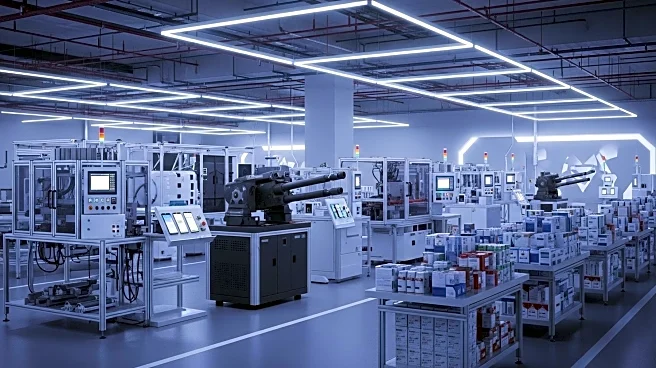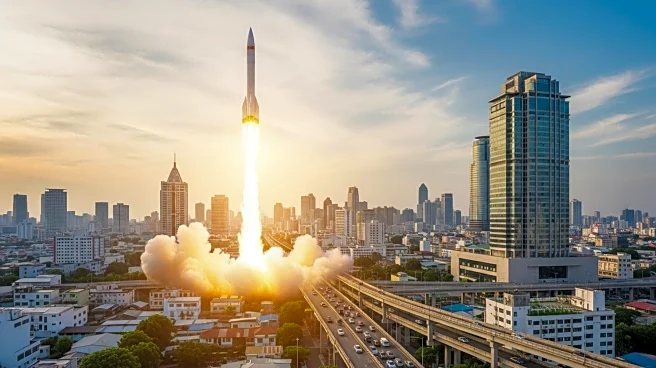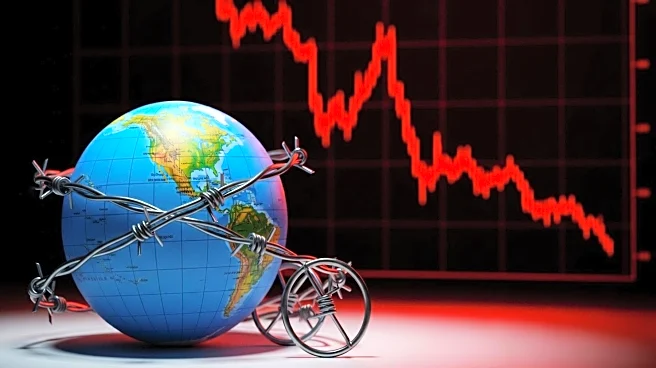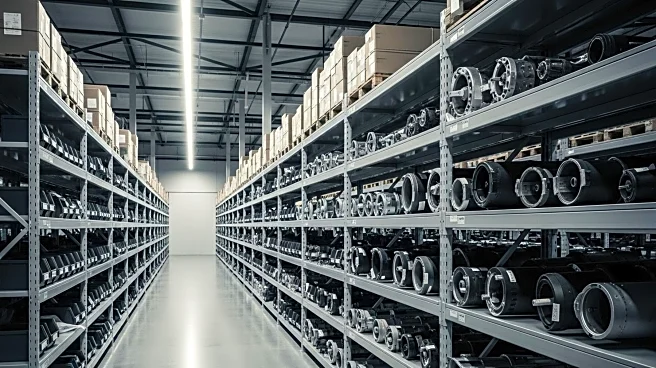What's Happening?
Investment banker Sarthak Ahuja has challenged the perception that India is weak in manufacturing, highlighting significant gains in sectors such as electronics, defense, renewable energy, and pharmaceuticals. In a LinkedIn post, Ahuja emphasized India's emergence as the second-largest manufacturer of mobile phones, with exports exceeding $30 billion annually. The country's pharmaceutical industry continues to be a net exporter, with notable advancements like Nafithromycin and investments in medical device manufacturing. India's defense production has tripled to $15 billion, with a majority of equipment now domestically produced. Additionally, India ranks as the third-largest manufacturer of wind and solar power equipment, with initiatives like the Suryaghar Muft Bijli Yojana lighting up over 1.5 million homes.
Why It's Important?
India's manufacturing advancements have significant implications for its economic growth and global competitiveness. The expansion in mobile phone production and pharmaceutical exports strengthens India's position in international markets, potentially attracting more foreign investment. The growth in defense manufacturing enhances national security and self-reliance, reducing dependency on foreign suppliers. Renewable energy developments contribute to India's sustainability goals and energy independence. These achievements reflect India's potential to diversify its industrial base and reduce reliance on imports, fostering economic resilience. However, challenges remain, such as the need for deeper integration across supply chains and addressing gaps in high-value component production.
What's Next?
India may continue to focus on expanding its manufacturing capabilities, with potential policy initiatives aimed at supporting domestic production and reducing import dependency. Stakeholders, including government agencies and industry leaders, may collaborate to enhance supply chain integration and invest in research and development. The global market may see increased competition from Indian manufacturers, prompting other countries to reassess their trade strategies. As India strengthens its manufacturing sector, it may also explore opportunities to expand into new markets and industries, further boosting its economic growth and international influence.
Beyond the Headlines
India's manufacturing growth highlights broader economic shifts and the potential for long-term industrial transformation. As the country invests in key sectors, it may also address socio-economic challenges, such as job creation and skill development. The emphasis on self-reliance and sustainability aligns with global trends towards ethical production and environmental responsibility. These developments may encourage other emerging economies to pursue similar strategies, fostering a more balanced global industrial landscape. Additionally, India's manufacturing achievements may prompt discussions on international trade policies and the role of innovation in driving economic progress.










